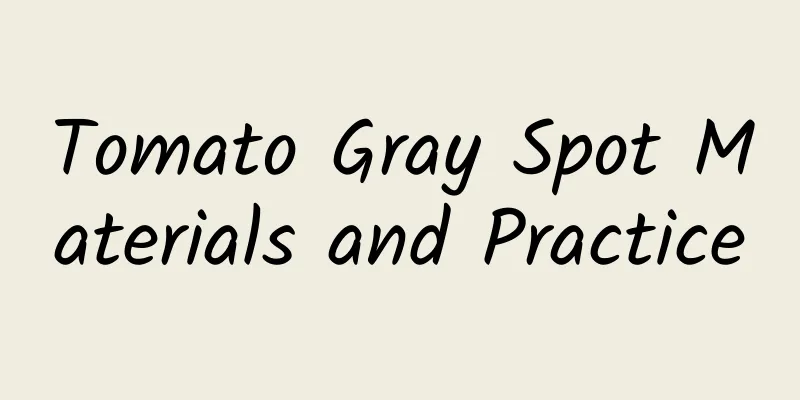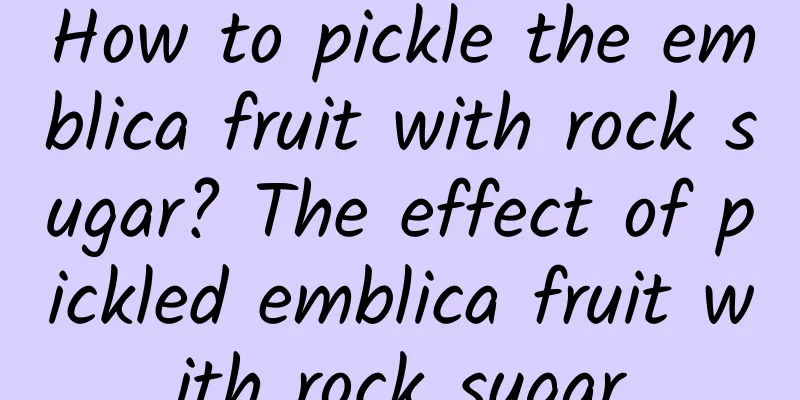Tomato Gray Spot Materials and Practice

|
What should we do if gray spot disease occurs when we grow tomatoes? Here are some precautions for gray spot disease of tomatoes: Tomato gray spot pathogenAscochyta lycopersici Tomato gray spot symptomsIt occurs in all places, mainly harming leaves. When the leaves are infected, small brown spots appear at first, which quickly expand into nearly circular and oval spots. The spots are gray-brown, with a diameter of 10 to 20 mm or even larger, and the ring pattern is not obvious. There are small black spots on the spots, which are arranged in a ring pattern. The spots are easy to rupture in the later stage, and in severe cases, the diseased leaves wither early. The law of disease occurrence The pathogen overwinters in the soil or on the surface with the diseased remains in the conidia. The conidia release conidia in the following year to infect tomatoes and cause the disease. New conidia are produced in the diseased part, which are spread by wind and rain for re-infection, and the disease continues to expand and spread. The pathogen likes a warm and humid environment. It is easy to get sick above 20°C, but the determining factor of whether the disease occurs or not is humidity. A high humidity environment, especially rain, plays an important role in the release and spread of conidia. Tomato gray spot control method① Agricultural measures: Use high ridges covered with mulch film and the density should be appropriate. Severely diseased land should be rotated with non-Solanaceae vegetables for more than 2 years. Apply fertilizers reasonably and avoid partial or excessive nitrogen fertilizers. Properly control the amount of watering and drain the water in the field in time after rain. When cultivating in protected land, pay attention to ventilation and moisture removal to reduce the humidity in the greenhouse. Do a good job of field cleaning and remove diseased leaves or clean up diseased residues in time. ② Chemical control: Carry out chemical control in time at the early stage of the disease. You can use 500 times of 75% thiophanate-methyl wettable powder, 300 times of 50% carbendazim wettable powder, 800 times of 70% thiophanate-methyl wettable powder, 600 times of 30% copper hydroxide, or 1:1:200 Bordeaux mixture for spraying. Spray once every 7 days, and control 2 to 3 times continuously. |
<<: Can pregnant women eat tomatoes?
>>: Nutritional value and cooking methods of tomatoes
Recommend
The nutritional value of meteor cabbage and the benefits of meteor cabbage
Meteor cabbage is a type of cabbage with the high...
How is the KEF speaker? KEF speaker review and website information
What is the KEF audio website? KEF is a famous Bri...
What is Menards like? Menards reviews and website information
What is Menards? Menards is the third largest home...
What are the benefits of washing your face with salt? What are the benefits of washing your face with salt?
Salt is an indispensable condiment in life, but s...
What is Epic Games like? Epic Games reviews and website information
What is Epic Games? Epic Games is an American game...
Ingredients and steps for colorful lean meat and crab porridge
It is the time of year when crabs grow fat again....
How is Kleenex? Kleenex reviews and website information
What is Kleenex? Kleenex is a world-renowned tissu...
Nutritional value of plums
Plums are sour and sweet, and are very popular am...
Prevention and Control of Headless Flammulina velutipes
What should we do when the enoki mushroom has no ...
What foods can lower blood sugar? How to eat foods that lower blood sugar
Many of the ingredients we eat on a daily basis h...
The nutritional value of fried pork skin and the effects and functions of fried pork skin
Fried pork skin is a classic dish that many peopl...
How to grow potted butterfly flowers? Cultivation methods and techniques for potted butterfly flowers
Potted butterfly flowers are native to the mounta...
Where is fried spring rolls from? How to make fried spring rolls?
Fried spring rolls are a traditional Chinese deli...
The 4 best foods to eat before bed to calm your nerves
Nowadays, life is stressful and more and more peo...
The benefits of eating honeydew melon
Hami melon is a common fruit with a strong fragra...









